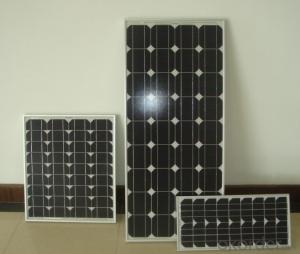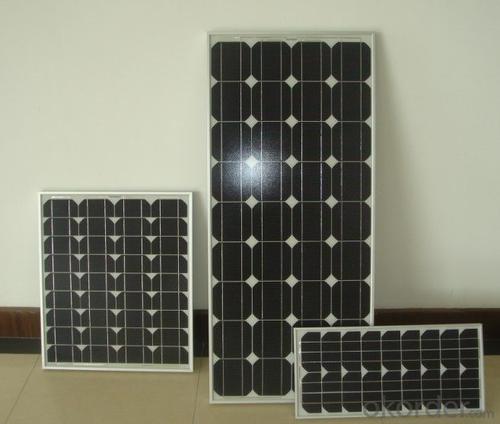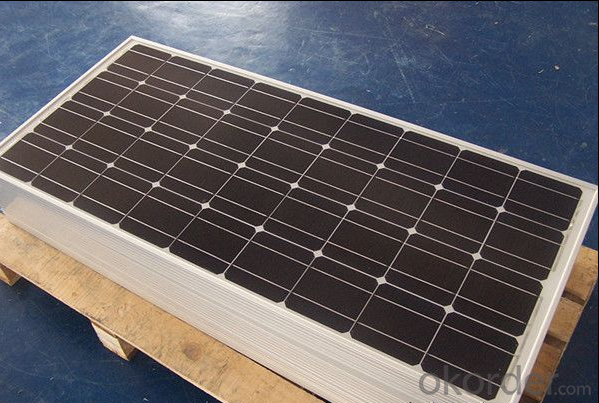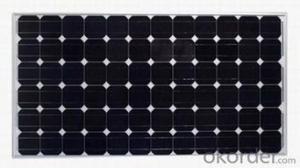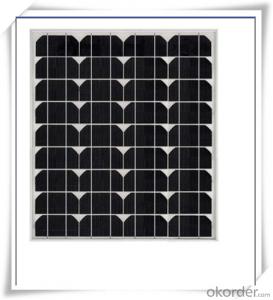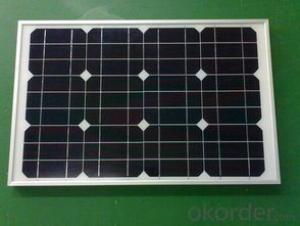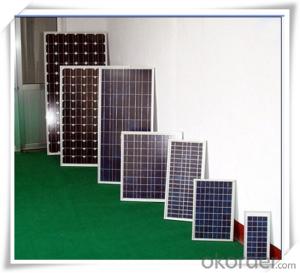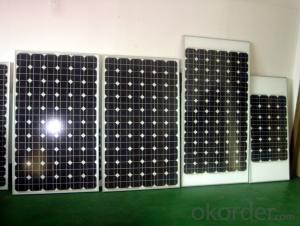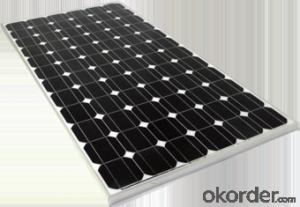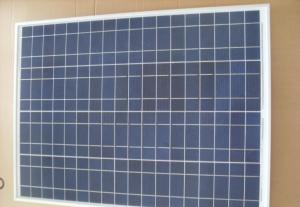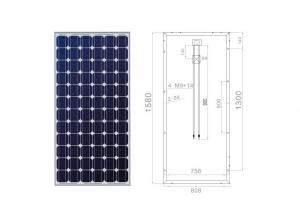Solar Panels Fort Myers:1.5w to 180w Monocrystalline Solar Panel with Lower Price CNBM
- Loading Port:
- Qingdao
- Payment Terms:
- TT OR LC
- Min Order Qty:
- 10 set
- Supply Capability:
- 300000 set/month
OKorder Service Pledge
OKorder Financial Service
You Might Also Like
1.5W to 180W Monocrystalline Solar Panel
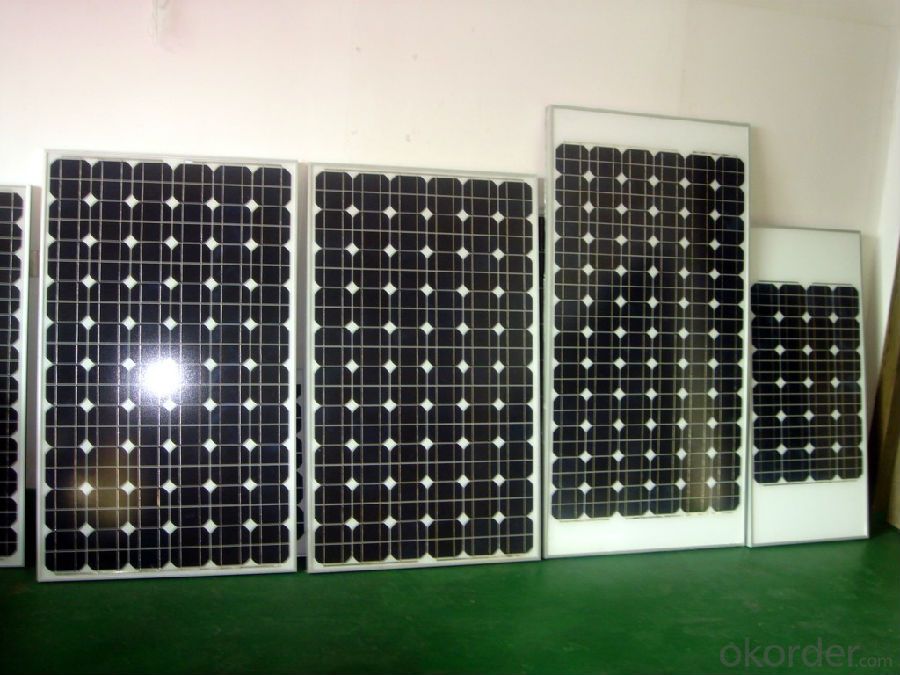
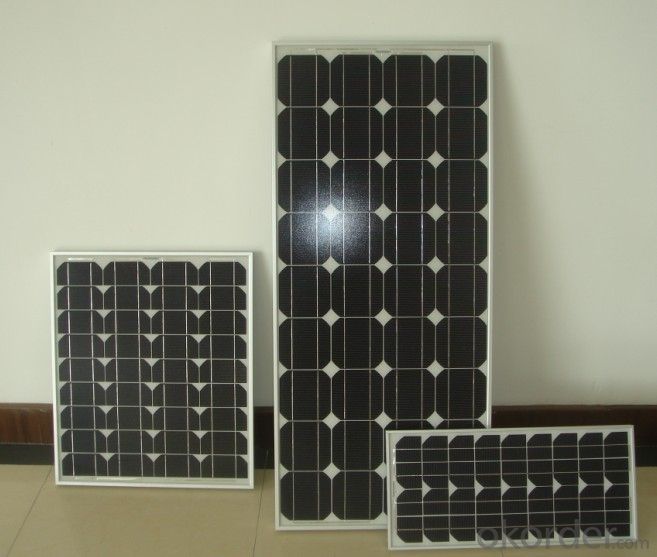
Quick Details
Place of Origin: | China (Mainland) | Brand Name: | CNBM | Model Number: | XRP-156M-250W |
Material: | Monocrystalline Silicon | Size: | 1620x992x40mm | Number of Cells: | 60 |
Max. Power: | 250w | Optimum Operating Voltage (Vmp): | 28.8V | Optimum Operating Current (Imp): | 8.68A |
Open Circuit Voltage (Voc): | 36V | Short Circuit Current (Isc): | 8.87A | Maximum Power at STC (Pmax): | 250W |
Operating Module Temperature: | -40 °C to +85 °C | Maximum System Voltage: | 1000 V DC (IEC) / 600V DC (UL) | Maximum Series Fuse Rating: | 15A |
Packaging & Delivery
Delivery Detail: | two weeks after order confirmation |
Features:
1) High Module conversion efficiency, through superior manufacturing technology
2) 0 to +5W positive tolerance for mainstream products
3) Certified to withstand high wind loads and snow loads
4) Anodized aluminum is for improving corrosion resistance
5) Anti-reflective, Highly transparent, low iron tempered glass
6) Excellent performance under low light environment
Benefit:
25-year performance warrant
10-year Product warranty
Electrical Characteristics:
Item No. | XRM-250W |
Optimum Operating Voltage (Vmp) | 28.8V |
Optimum Operating Current (Imp) | 8.68A |
Open Circuit Voltage (Voc) | 36V |
Short Circuit Current (Isc) | 8.87A |
Maximum Power at STC (Pmax) | 250W |
Cell Efficiency | 17.70% |
Operating Module Temperature | -40 °C to +85 °C |
Maximum System Voltage | 1000 V DC (IEC) / 600V DC (UL) |
Maximum Series Fuse Rating | 15A |
Power Tolerance | 0/+5 % |
STC: lrradiance 1000 W/m2, module temperature 25 °C, AM=1.5;
Best in Class AAA solar simulator (IEC 60904-9) used, power measurement uncertainty is within +/- 3%
Mechanical Characteristics:
No. of Cells | 60(6X10) |
Dimensions | 1640x992x40MM |
Weight | 20.0KGS |
Front | Glass 4.0 mm tempered glass |
Frame | Anodized aluminium alloy |
Temperature Characteristics:
Nominal Operating Cell Temperature (NOCT) | 45±2°C |
Temperature Coefficient of Pmax | -0.44 %/°C |
Temperature Coefficient of Voc | -0.33 %/°C |
Temperature Coefficient of Isc | 0.055 %/°C |
Refer to the Wmp range
Our factory can produce solar panel and solar module from 1.5W-290w (1.5w, 2.5w, 5w, 10w, 20w, 40w, 50w, 60w, 80w, 85w, 125w, 135w, 150w, 165w, 180w), according to customers requirement.
(A). Wmp range: 0.01W-6W, to be sealed with epoxy resin on PCB (printed circuit board), or to be sealed in plastic directly.
(B). Wmp range: 0.01W-15W, to be encapsulated with PET, on PCB (printed circuit board)
(C). Wmp range: 1W-60W, to be encapsulated with PET, on stainless steel, with holes for assembling purpose.
(D). Wmp range: 1W-290W, to be encapsulated with tempered glass, EVA, TPT, together with aluminium frame, junction box and (if necessary)diode and cable.
Refer to the material:
Monocrystalline solar cell or polycrystalline solar cell
Efficiency range 14%-17%, cell size 5/6.
- Q: I have two solar panels that were going to be trashed at work. I want to use them to charge batteries on my RV but i noticed they put out around 20 volts in direct sunlight. So i am wondering: -isn't this way too much voltage for a 2 volt system? -do a need some sort of a regulator connected to keep them from overcharging?
- You can use them without the regulator . Just make sure you use blocking diodes so the the power does not flow back into the panels . You can get those at radio shack of some electronic store or off OKorder for a few bucks .
- Q: Making a solar panelI know there was a recommended wattage for the soldering iron but i cant rememberdoes anyone know?
- Temperature controlled soldering irons like Weller are best. They don't burn up if left turned on.
- Q: Are there any limitations to the lifespan of solar panels?
- Yes, there are limitations to the lifespan of solar panels. While solar panels are designed to be durable and long-lasting, they do have a finite lifespan. The average lifespan of solar panels is typically around 25-30 years. However, environmental factors, such as extreme weather conditions, can affect their performance and longevity. Over time, solar panels may experience degradation, reducing their efficiency and power output. Additionally, technological advancements may render older solar panel models outdated or less efficient. Despite these limitations, proper maintenance and regular cleaning can help extend the lifespan of solar panels.
- Q: Can solar panels be used in areas with high levels of insect activity?
- Yes, solar panels can be used in areas with high levels of insect activity. While insects may occasionally land on the panels, it does not significantly impair their functionality or efficiency. Regular cleaning and maintenance can help ensure optimal performance and prevent any long-term issues caused by insects.
- Q: Ok so I am planning on buying a solar panel. I am doing it to possibly sell the energy that it stores. It is a 20 watt panel so I am just wondering if every week or month if I sold that energy that it stored would make me a good profit. I am not hoping for thousands of dollars a month..just like 00? The solar panel cost me $,00 so if so, how long do you think it would take to make good profit. Also, how much would I make every week or month?
- I will give you the tools to answer your own question. Here is the solar resource map: rredc.nrel /solar/old_data/nsr... Use it to look up the hours of peak equivalent sunlight per day in your area. For example, let's say it's 5 hours / day. Then per year you get 365 x 5 = 825 hours of sun Your panel is 20 watts, or 0.2 kW So the energy produced per year is 825 x .2 = 383 kWh You'll have to use the proper numbers for your own area, of course. Anyway, you can take that 383 kWh and determine how much it would cost at local electric rates. Never know, on some islands, it's $.00 per kWh. Check with your local electric company for rates.
- Q: Can solar panels be installed on warehouses?
- Yes, solar panels can be installed on warehouses. In fact, warehouses are ideal locations for solar panel installations due to their large roof spaces that can accommodate a significant number of panels. The ample sunlight exposure and lack of shading make warehouses a perfect fit for harnessing solar energy. Additionally, solar panels on warehouses can help reduce electricity costs and contribute to a greener, more sustainable energy source.
- Q: I would love to put in solar panels on my roof, but how hard would it be, and how expensive? Would I be able to do the work myself, or would I have to hire a pro?Also I live in Oregon, so much of the time it is overcast, so would it really be worth it?
- Not a good idea. The reason why panels are that much more expensive than cells is that the panels themselves are not that cheap either. If you start with the cells, you'll need - mechanical protection (hail, ice, snow) - electrical protection (i.e. waterproofing - if water comes in contact with the cells and wires, you'll get electrolysis which will corrode your wires and contacts faster than you can say 'b*mmer') - that setup will need to withstand temperatures between -20 and +30 °C (only guessing, might be worse) - oh, and the side facing the sun must be transparent (as far as possible) Now as to connecting the stuff: no, it will be neither easy to connect it to the house power nor to the grid - which is why that step (at least) in all countries I know of must be done by a certified electrician. If you get it wrong and you're lucky, only _your_ inverter will explode. Regarding the power: these 4W per cell (or kW for your shed) is the peak value, i.e. with the sun shining orthogonally onto the cells on a clear day. Since this (for a fixed installation) will only be true (at most) for a few minutes on a few days each year, your overall yield will be significantly less, probably more like 4 kWh/day for each clear day for each kWpeak you install _IF_ the shed roof is oriented exactly south and inclined towards the sun's noon position at the spring/autumn equinox (i.e. inclination angle = your geographical latitude). How many clear days do you have in britain? Yes, I had a similar idea for myself - but for one thing, the registered companies I addressed apparently weren't really interested in that small fry, plus the cost of the system + setup would barely have been amortized after the expected lifetime, even taking into account the (german) governmental subsidies. If I had the money to spare, I'd rather invest in a communal solar park. Much better ROI, the large installations get much better prices (per kW) for the setup.
- Q: i am doing this group project fro school. I would like to know if anybody knows anything about how to read a Spec. Sheet on Solar panels and where I could go to start researching them. Anything would be great!
- i think of you may desire to examine slightly extra approximately photograph voltaic capability and battery utilization. possibly you heavily isn't waiting to do this effectively with an on board photograph voltaic gadget. examine the wattage (volts situations cutting-edge) of the motor. you would be fortunate to get 0 watts according to sq. foot from a photo voltaic panel at midday on the excellent day. thinking the sq. photos necessary the dimensions and weight of a fee controller you need to be extra advantageous off with connection to a distant charger, powered from AC
- Q: Can solar panels be installed on backpacks or camping gear?
- Yes, solar panels can be installed on backpacks or camping gear. There are portable and lightweight solar panels specifically designed for outdoor activities that can be easily attached to backpacks or other camping gear. These panels can help generate renewable energy to charge devices or power small electronic devices while on the go.
- Q: What happens to solar panels during extreme weather conditions?
- During extreme weather conditions, such as hurricanes or heavy snowstorms, solar panels can be damaged or temporarily rendered ineffective. Strong winds, flying debris, or heavy snow can cause physical damage to the panels, such as broken glass or dislodged components. Additionally, excessive snow accumulation can cover the panels, reducing their ability to generate electricity. However, modern solar panels are designed to withstand most extreme weather conditions and are tested to meet certain durability standards.
Send your message to us
Solar Panels Fort Myers:1.5w to 180w Monocrystalline Solar Panel with Lower Price CNBM
- Loading Port:
- Qingdao
- Payment Terms:
- TT OR LC
- Min Order Qty:
- 10 set
- Supply Capability:
- 300000 set/month
OKorder Service Pledge
OKorder Financial Service
Similar products
Hot products
Hot Searches
Related keywords
